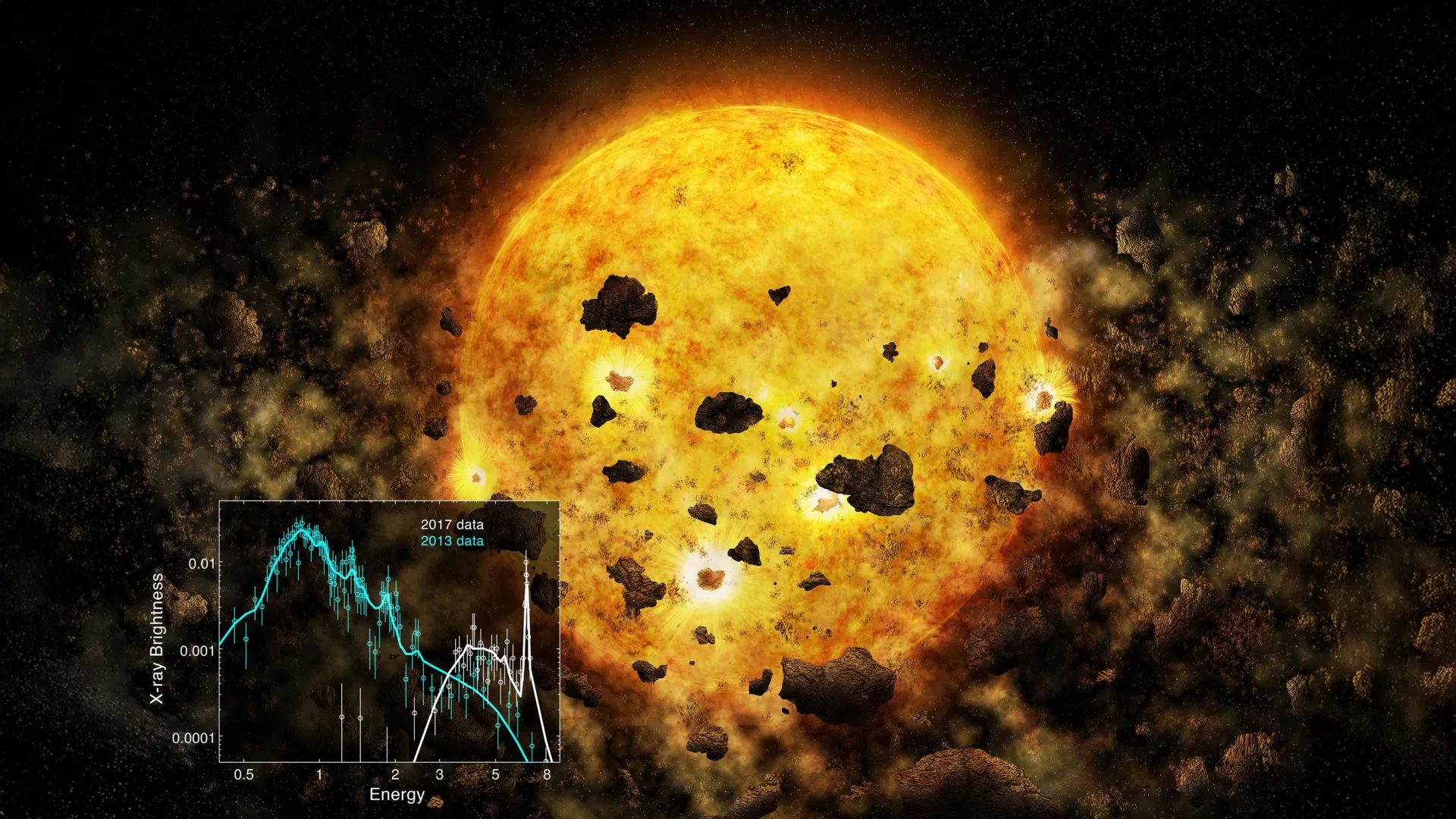Ultra-hot Jupiter in death spiral may reveal how rocky worlds are born
Astronomers led by a team at Macquarie University have tracked an extreme planet’s orbital decay to understand how stars dissipate energy.
- Date:
- August 3, 2025
- Source:
- Macquarie University
- Summary:
- A massive, fast-orbiting planet is inching closer to its star, and scientists now have direct evidence of its impending demise. It could disintegrate, burn up, or be stripped bare, offering rare clues into how planetary systems evolve.
- Share:

Macquarie University astronomers have tracked an extreme planet's orbital decay, confirming it is spiralling towards its star in a cosmic death dance that could end in three possible ways.
The ultra-hot Jupiter exoplanet TOI-2109b, located 870 light-years from Earth, completes an orbit around its star in just 16 hours - making it the closest hot Jupiter ever discovered.
With a mass nearly five times that of Jupiter and almost twice Jupiter's size, TOI-2109b orbits even closer to its star than Mercury does to our Sun.
"Just to put it into context - Mercury's mass is almost 6,000 times smaller than Jupiter, but it still takes 88 days to orbit our Sun. For a huge gas giant such as TOI-2109b to fully orbit in 16 hours - it tells us that this is a planet located super-close to its star," says Dr Jaime A. Alvarado-Montes, a Macquarie Research Fellow who led the international study published on July 15 in The Astrophysical Journal.
By analysing transit timing data from multiple ground-based telescopes, NASA's TESS mission and the European Space Agency's CHEOPS satellite spanning 2010 to 2024, the team detected subtle changes in the planet's orbit.
Both theoretical models and observations independently calculated that the planet's orbital period would decrease by at least 10 seconds over the next three years - confirming the planet may be spiralling towards its star.
The researchers identified three possible fates for TOI-2109b: it could be torn apart by tidal forces, plunge directly into its star, or have its gaseous envelope stripped away by intense radiation, leaving only a rocky core.
"This planet and its interesting situation could help us figure out some mysterious astronomical phenomena that so far we really don't have much evidence to explain," Dr Alvarado-Montes says. "It could tell us the story of many other solar systems."
The findings suggest some rocky planets in other solar systems might be the stripped cores of former gas giants - a possibility that could reshape our understanding of planetary evolution.
With continued monitoring over the next three to five years, astronomers will detect the predicted orbital changes, providing real-time observation of a planetary system in its death throes.
Story Source:
Materials provided by Macquarie University. Note: Content may be edited for style and length.
Journal Reference:
- Jaime A. Alvarado-Montes, Mario Sucerquia, Jorge I. Zuluaga, Christian Schwab. Orbital Decay of the Ultra-hot Jupiter TOI-2109b: Tidal Constraints and Transit-timing Analysis. The Astrophysical Journal, 2025; 988 (1): 66 DOI: 10.3847/1538-4357/ade057
Cite This Page: